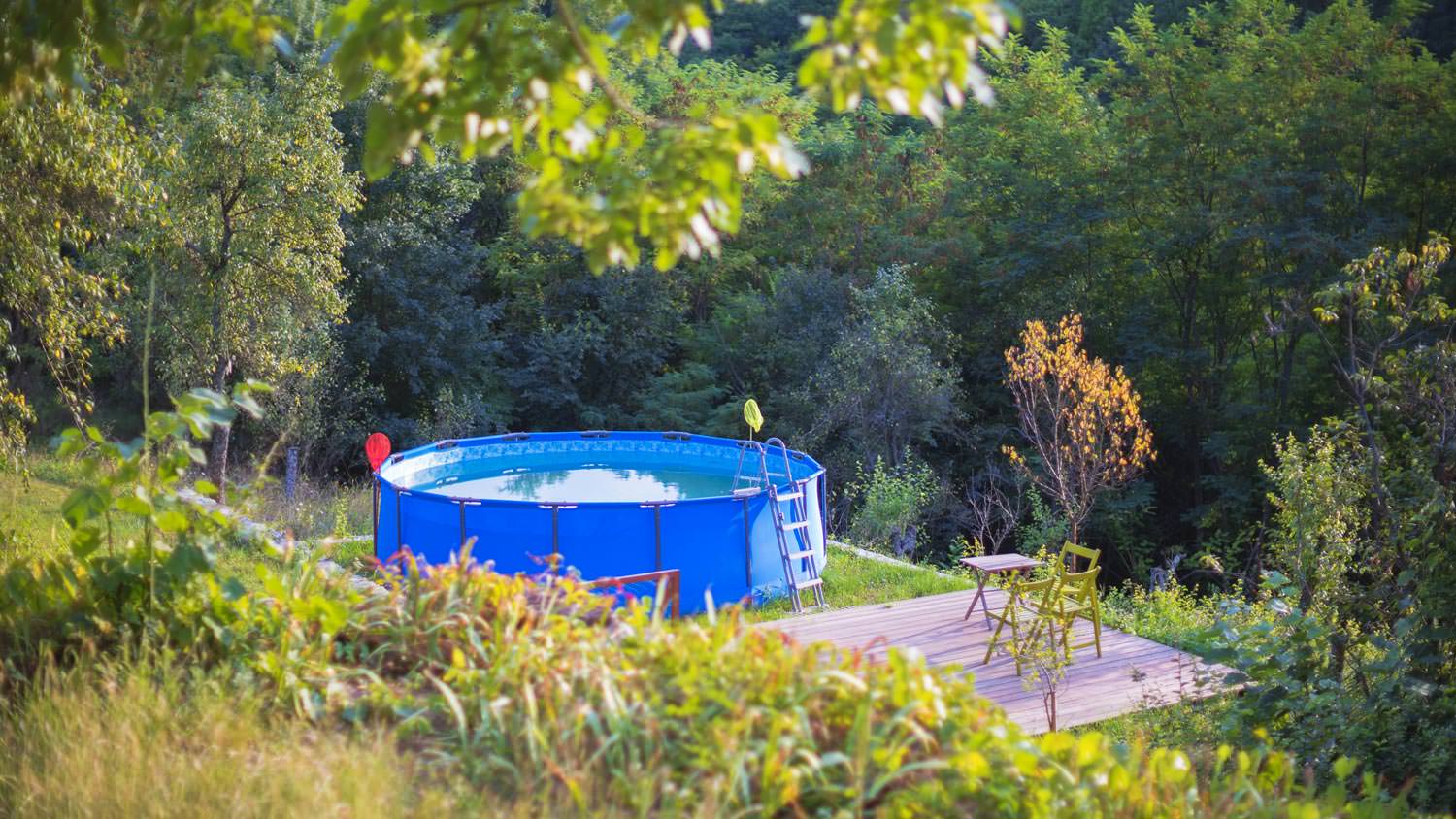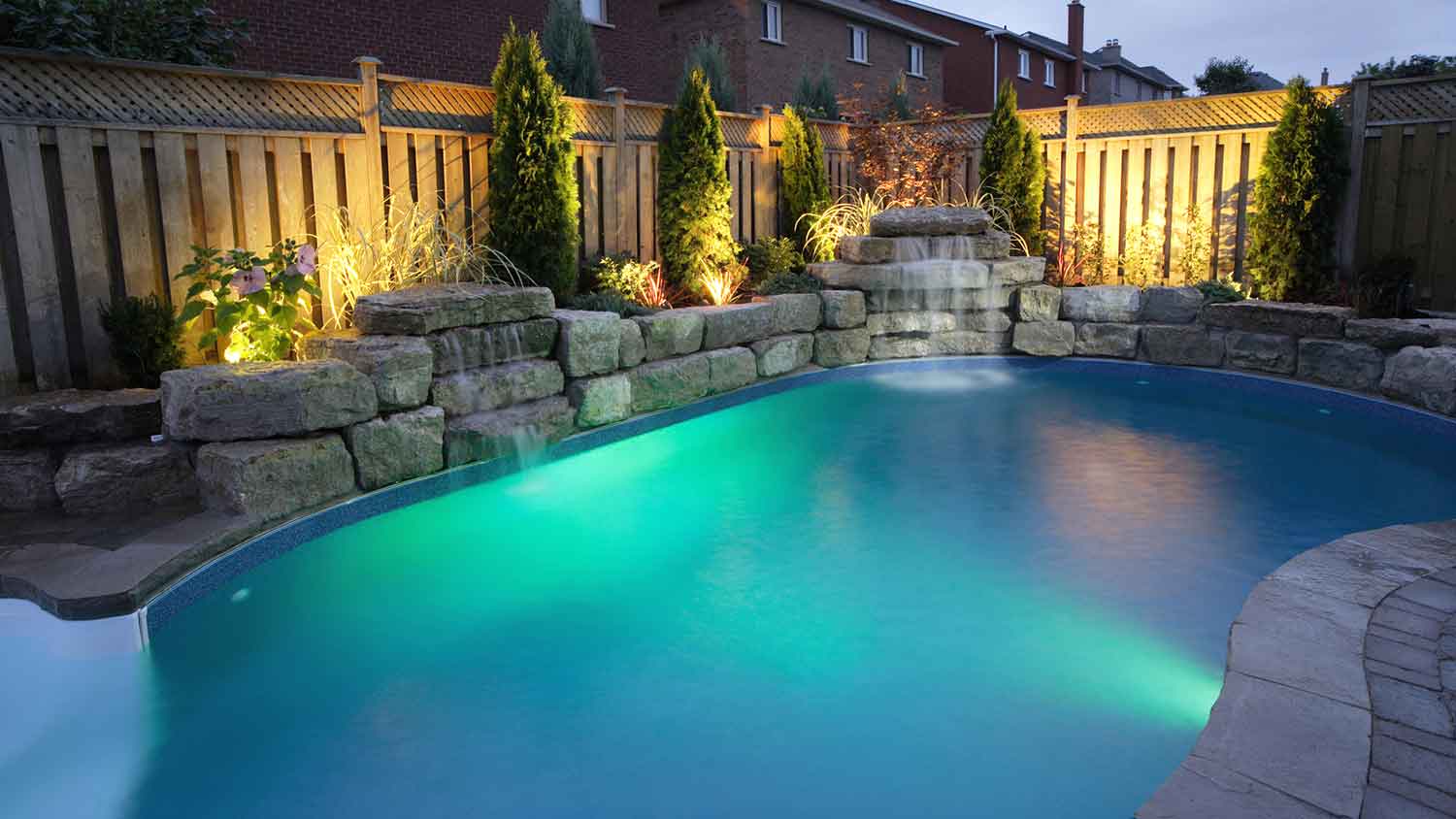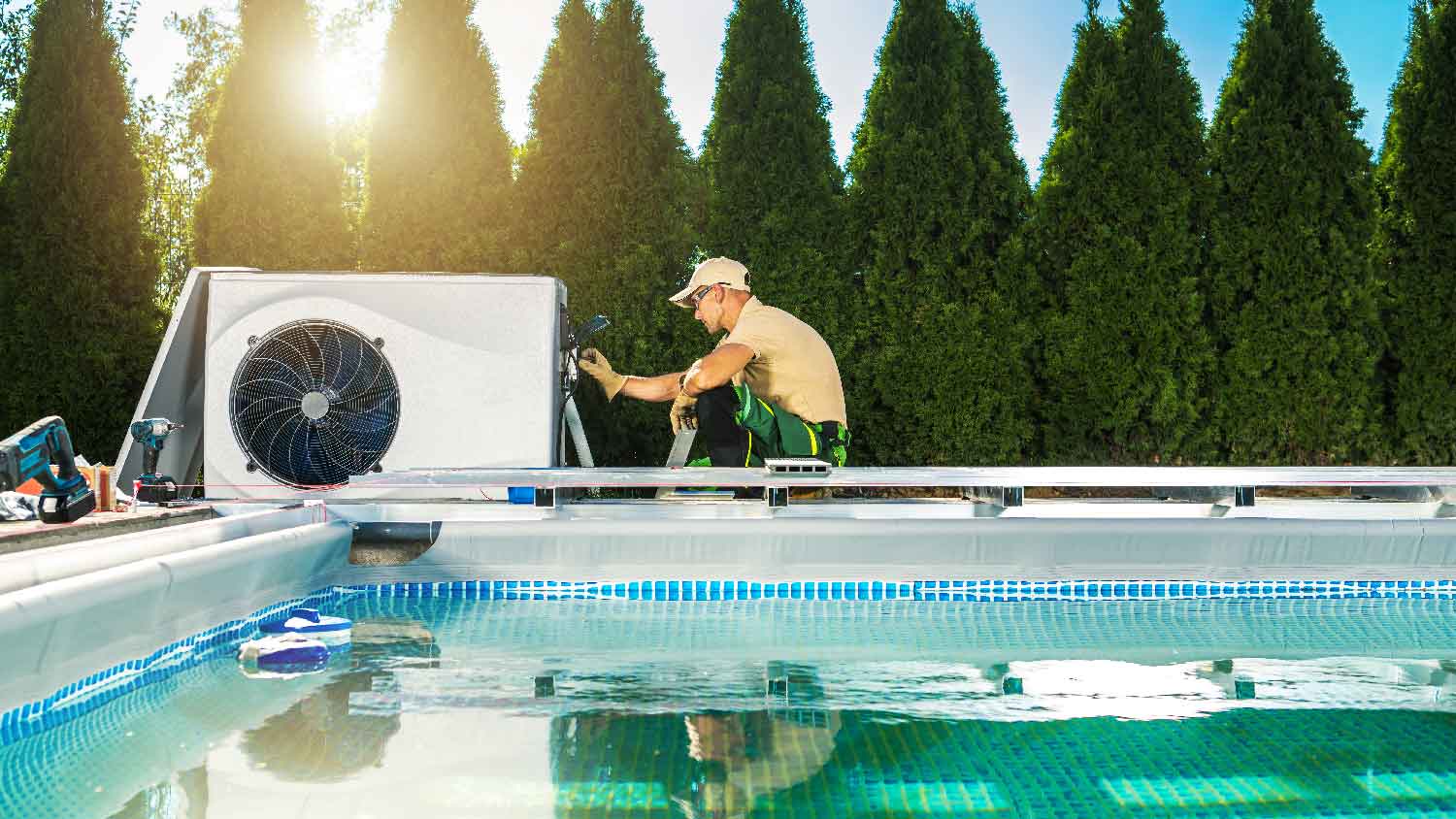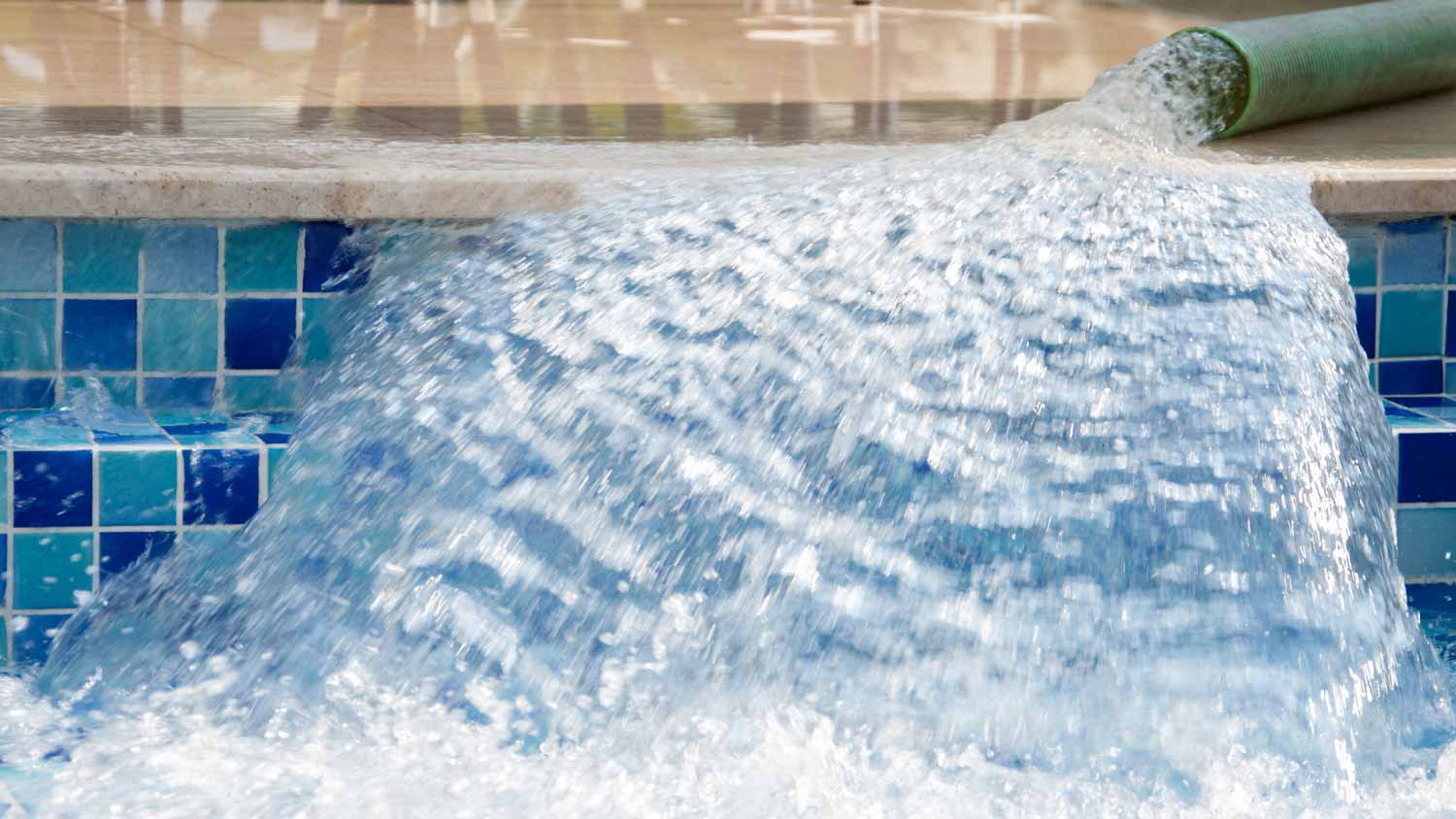
It’s time to kick back and cool down for the summer. If you’re ready to make a splash, check out how much an in-ground pool costs with this guide.
The average cost to build a natural pool is $100,000


An average natural pool project ranges from $25,000 to $150,000, with an average of $100,000.
Labor, materials, and excavation are the major cost drivers to consider.
Choosing a natural pool reduces chemical usage and supports an eco-friendly backyard environment.
Working with pool building professionals ensures a safer build, fewer complications, and long-term reliability.
This article was updated using automation technology and thoroughly reviewed for accuracy by HomeAdvisor Editor Ryan Noonan.
Building a natural pool turns your backyard into an eco-friendly retreat. Most homeowners invest an average of $100,000, with costs ranging from $25,000 to $150,000, or roughly $50 to $100 per square foot. Your total bill depends on several factors, including the size and type of pool you build, the materials you use, and the rates your pro charges. Setting a clear budget and teaming up with a qualified pool pro helps keep the project on schedule—and leaves you with a beautiful, worry-free pool.
Expect your budget to cover four main categories: materials, excavation, heavy-equipment use, and labor. Plan for every stage—including a cushion for surprises. For instance, if your contractor encounters hard rock during excavation, you may need to pay for blasting to keep the project on schedule.
Labor often adds $8,000 to $10,000—or more—to the total. Most projects call for a team that includes a pool builder, landscaper, and excavation contractor.
Local pool builders oversee the construction and installation of the pool structure and filtration systems. Landscapers, charging $50 to $100 per hour, handle the planting in the regeneration zone and the surrounding landscape design. Depending on your location, excavation contractors charge $100 to $250 per hour to dig out the pool area. Their costs can vary based on soil conditions and the accessibility of your site.
Plan to spend $250 to $2,000 on building permits fees, depending on your location. Local rules often require several permits before construction can begin, so include this line item in your budget from the start.
A pool pump costs between $300 and $1,200, depending on its type and capacity. Continuous circulation between the swim and regeneration zones keeps the water clear and safe, so a reliable pump is non-negotiable.
Retaining walls cost between $20 and $100 per square foot. If your pool design requires a retaining wall due to the slope of your yard or for aesthetic reasons, this will add to your overall cost.
Pool sand costs anywhere from $15 to $30 per ton and is a common addition to natural pools, creating a lakeside beach feel. It's also frequently used in the regeneration zone as part of the natural filtration system.
Adding a waterfall costs between $250 and $15,000, based on size and style. For this type of pool, a natural-looking waterfall cascading over rocks is a good option and costs $2,000.
Pool lighting costs between $450 and $1,200. LED strip lighting is an affordable, eco-friendly, and aesthetically pleasing choice, and floating LED lights add a splash of magic to your pool after dark.
Landscaping can be a significant expense when installing a natural pool. It might be as simple as reseeding your lawn or as elaborate as adding an outdoor kitchen, building flower beds, rewilding the area around the pool, and installing walkways.
After the water is in and the plants are settled, routine costs drop. Skip the traditional seasonal opening and closing—let the pool freeze and thaw on its own, then run the pump for a few weeks before the first swim of the season. You'll need to vacuum occasionally to remove sediment and skim the surface to remove debris. The pump may require occasional servicing to maintain its efficient operation.
Monthly maintenance for a natural pool costs $150 to $260, and ongoing operating costs are lower than those for traditional pools.
Natural pool materials vary widely in cost, ranging from $0.25 per square foot for a thin, budget-friendly liner to $113 per square foot for a high-end fiberglass liner. Concrete is a popular choice because it's more affordable than fiberglass and more durable and attractive than a traditional liner.
| Material | Average Cost per Sq. Ft. |
|---|---|
| Liner | $0.72 |
| Clay | $1.00 |
| Gravel | $1.50 |
| Concrete | $62.50 |
| Fiberglass | $106.50 |
Pool liners cost $0.25 to $1.20 per square foot, so the materials to line a 600-square-foot pool would range from $150 to $720. They're not the most attractive, although black liners work well to conceal themselves and create a natural appearance once the pool is full of water.
Bentonite clay pool lining costs $0.50 to $1.50 per square foot. Lining a 600-square-foot pool with bentonite clay will cost between $300 and $900 for materials only. You can choose a clay liner or apply it directly to the prepared and compacted soil to seal it, which is more affordable than purchasing a prefabricated clay liner. Applying clay directly to the soil creates a more unique, natural look and feel than a manufactured liner.
Gravel costs $1 to $2 per square foot but isn't a lining material. However, it is an essential addition to the regeneration zone of your pool, as it's part of the natural filtration system. In the regeneration zone, the pool contractor adds a layer of gravel around six inches deep to help keep the water clean and healthy.
A concrete pool costs $55 to $70 per square foot, which translates to a price of $33,000 to $42,000 for materials alone for a 600-square-foot pool. Concrete is robust and durable, and it is one of the most customizable options in terms of size, shape, and depth. With a natural pool, homeowners often opt to have the concrete painted black, which gives the pool a more natural appearance.
A fiberglass natural pool costs $100 to $113 per square foot. Fiberglass pools are highly customizable and inhibit algae growth. They're also popular due to their beauty and ease of maintenance.
While natural pools are a significant investment, they can boost your home's value by 5 to 7% when well-designed and properly maintained. These eco-friendly features appeal to environmentally conscious buyers and stand out in luxury home listings. The unique combination of natural aesthetics and sustainable design creates a distinctive selling point that traditional pools can't match.
However, return on investment varies by location—natural pools tend to add more value in upscale neighborhoods and regions with longer swimming seasons. For maximum value, ensure your natural pool complements your overall landscape design and includes proper documentation of the maintenance system.
Building a natural pool yourself can cut costs if you already have expertise in excavation and biological filtration. However, missteps with construction or permits can become expensive and unsafe quickly. A seasoned pool pro brings the right equipment, handles the paperwork, and keeps the project on track.
If you’re comfortable with basic construction or landscaping, you can tackle smaller tasks, but leave the heavy excavation, complex plumbing, and electrical work to a licensed expert. Partnering with a local pool pro keeps the build safe and efficient.
No place is more important than your home, which is why HomeAdvisor connects homeowners with local pros to transform their houses into homes they love. To help homeowners prepare for their next project, HomeAdvisor provides readers with accurate cost data and follows strict editorial guidelines. After a project is complete, we survey real customers about the costs to develop the pricing data you see, so you can make the best decisions for you and your home. We pair this data with research from reputable sources, including the U.S. Bureau of Labor Statistics, academic journals, market studies, and interviews with industry experts—all to ensure our prices reflect real-world projects.
From average costs to expert advice, get all the answers you need to get your job done.

It’s time to kick back and cool down for the summer. If you’re ready to make a splash, check out how much an in-ground pool costs with this guide.

Who installs above ground pools? Learn when to hire a pool installer vs. landscaper, what to expect, and the typical cost range.

Not sure who to call to fix a pool light? Learn why a pool repair service is best, what electricians can do, and what replacement costs.

Need to know who to call to fix a pool heater? See why a pool electrician is best for safe, code‑compliant pool heater repair—find a pro today.

Wondering who to hire to remodel a pool? Learn when to call a pool remodeling company vs. a pool installer, plus the steps pros take to transform your pool.

Who can I call to fill my pool with water? Compare pool water delivery vs. other options, see costs, and learn how pros get it done.